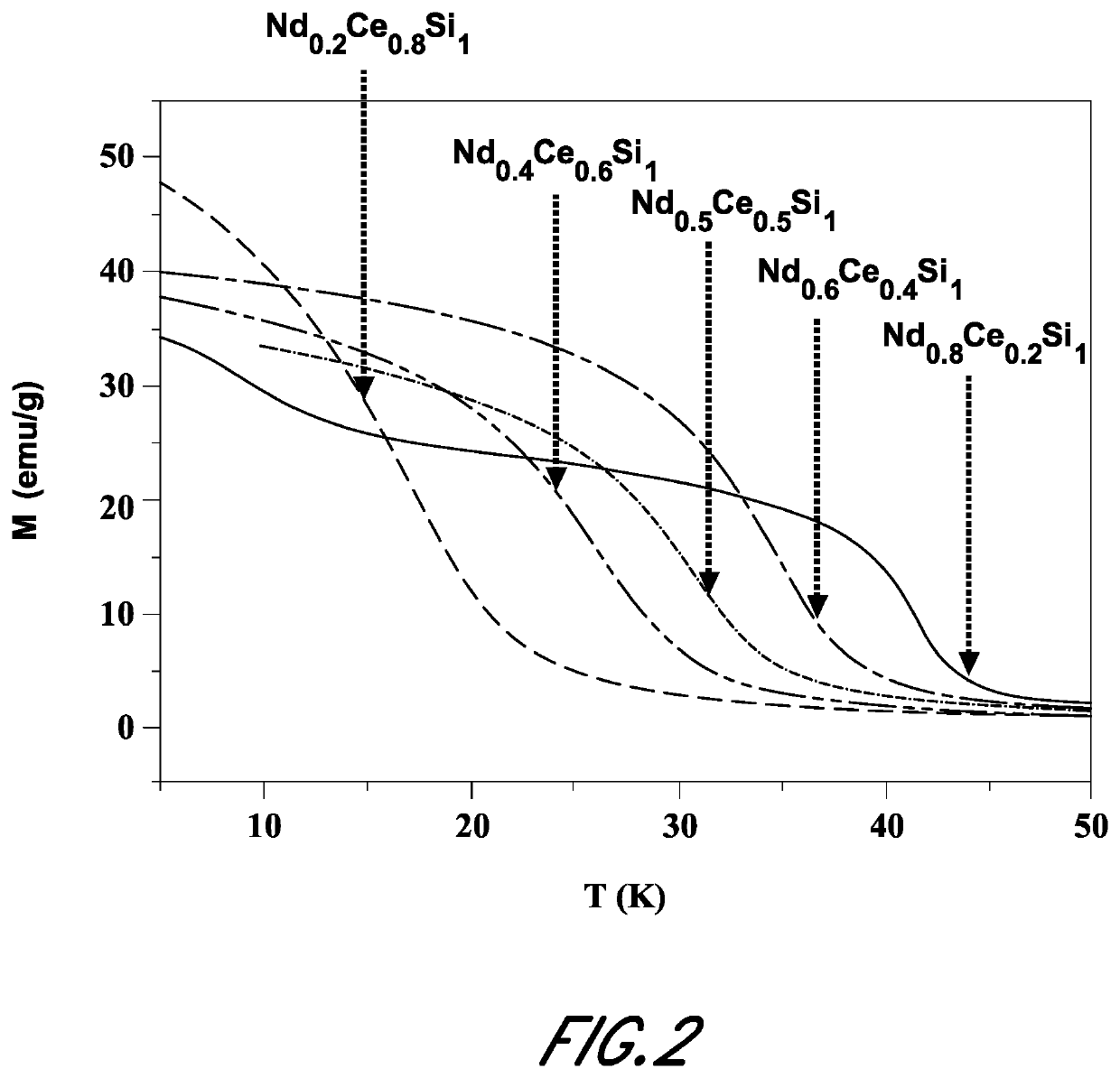Magnetocaloric alloys useful for magnetic refrigeration applications
a technology of magnetocaloric materials and magnetic refrigeration, which is applied in the direction of magnetic bodies, lighting and heating apparatus, and machine operation, etc., can solve the problems of low cost of magnetocaloric materials that will actually function, low cost of magnetocaloric materials, and development of magnetic refrigeration technologies, etc., and achieve no thermal and structural hysteresis loss
- Summary
- Abstract
- Description
- Claims
- Application Information
AI Technical Summary
Benefits of technology
Problems solved by technology
Method used
Image
Examples
example 1
[0046]A Nd0.5Ce0.5Si1.0 ingot was prepared by arc melting in an argon atmosphere. The ingot was sealed in a quartz tube furnace under argon and annealed at 950 C for 2 weeks. FIG. 1 shows the DS vs entropy and FIG. 2 shows the magnetization versus temperature for the Nd0.5Ce0.5Si1.0 alloy with 2nd order phase transition occurring near 32K.
example 2
[0047]A Nd0.2Ce0.8Si1.0 ingot was prepared by arc melting in an argon atmosphere. The ingot was sealed in a quartz tube furnace under argon and annealed at 950 C for 2 weeks. FIG. 2 shows the magnetization versus temperature for the Nd0.2Ce0.8Si1.0 alloy with 2nd order phase transition occurring near 15K.
example 3
[0048]A Nd0.4Ce0.6Si1.0 ingot was prepared by arc melting in an argon atmosphere. The ingot was sealed in a quartz tube furnace under argon and annealed at 950 C for 2 weeks. FIG. 2 shows the magnetization versus temperature for the Nd0.4Ce0.6Si1.0 alloy with 2nd order phase transition occurring near 25K.
PUM
| Property | Measurement | Unit |
|---|---|---|
| temperature | aaaaa | aaaaa |
| magnetic phase transition temperature | aaaaa | aaaaa |
| magnetic phase transition temperature | aaaaa | aaaaa |
Abstract
Description
Claims
Application Information
 Login to View More
Login to View More - R&D
- Intellectual Property
- Life Sciences
- Materials
- Tech Scout
- Unparalleled Data Quality
- Higher Quality Content
- 60% Fewer Hallucinations
Browse by: Latest US Patents, China's latest patents, Technical Efficacy Thesaurus, Application Domain, Technology Topic, Popular Technical Reports.
© 2025 PatSnap. All rights reserved.Legal|Privacy policy|Modern Slavery Act Transparency Statement|Sitemap|About US| Contact US: help@patsnap.com



